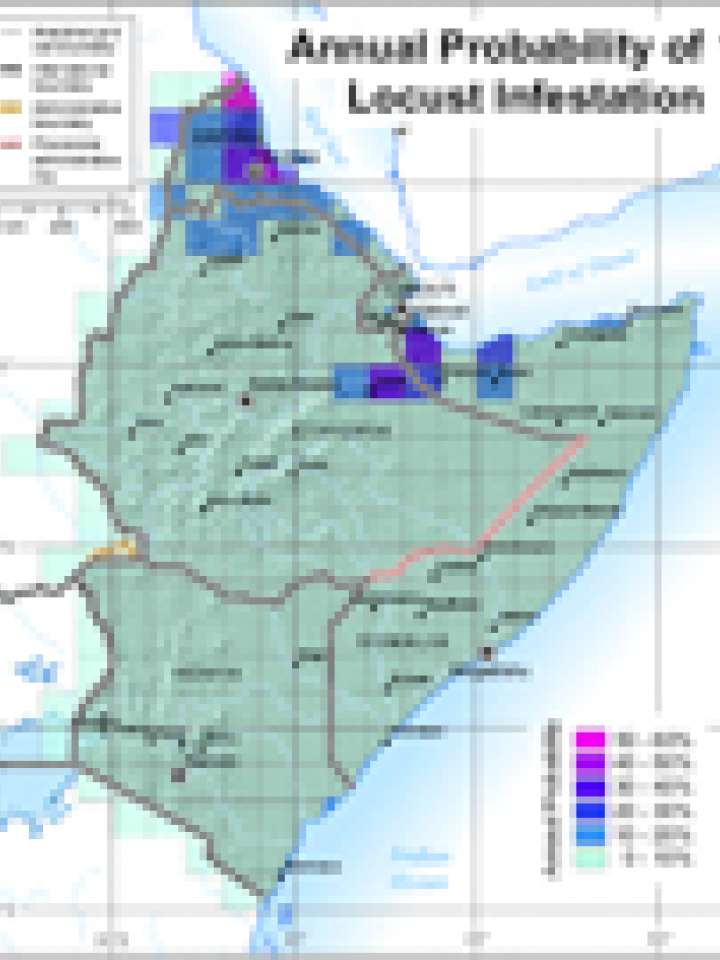Horn of Africa: annual probability of locust infestation
This map illustrates the likelihood that a given region will sustain any locust infestation within any given year.
Locust infestations occur periodically and are endemic to a broad band covering northern Africa that extends east to the margins of the Red Sea. Along the Red Sea coast, the locusts' winter breeding area, swarms develop when rain falls on the sandy soil to initiate the hatching of locust eggs. If plenty of water and vegetation for food exist in the locust breeding areas, a large number of the insects hatch and form swarms. Historical infestations are clustered in northern Eritrea and near the conjunction of Somalia, Ethiopia, and Djibouti, and the annual probability in these regions can exceed 30-40%.
This locust risk analysis incorporates data from 1992-2006 on gregarious populations of hoppers and adults compiled by the FAO Locust Control Office. Infestation frequency and probability are aggregated to the corresponding one-degree grid cells. Societal exposure is based upon the intensity of crop and livestock activities in the region.
Explore further
